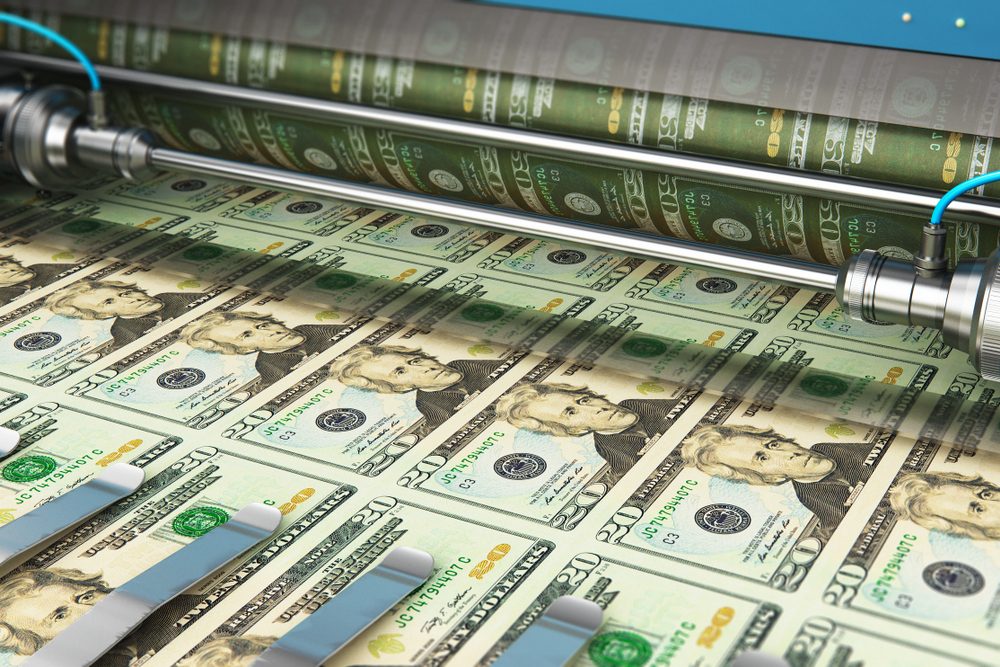As policy intervention ratchets up to new levels in response to Covid-19, what are the implications for investors?
- The scale of monetary-policy intervention in response to the Covid-19 pandemic far exceeds that witnessed in the aftermath of the global financial crisis. One key difference this time is that governments have loosened fiscal policy aggressively at the same time.
- Many governments are adopting a more strategic purpose to their fiscal response to the crisis, with spending on ‘green’ infrastructure projects, which should present some attractive investment opportunities.
- Monetary stimulus combined with fiscal injections may, eventually, result in price inflation that exceeds central bankers’ recently raised aspirations for inflation rates.
Our long-standing ‘state intervention’ theme explores how, since the 2007-8 global financial crisis, governments and their associated monetary authorities have engaged in ever-greater policy intervention and regulation to shore up economic growth.
As the Covid-19 pandemic unfolded in 2020, we saw significant monetary stimulus deployed in response to a crisis. Indeed the scale of intervention far exceeds that witnessed in the aftermath of the global financial crisis, and is likely to be maintained for the foreseeable future. However, one key difference this time is that governments have loosened fiscal policy aggressively at the same time, and are using this to bridge some of the gaps in household incomes and corporate cash flow resulting from the economic lockdowns experienced over the last year. We are, therefore, set for a sustained period of higher budget deficits.
With all governments effectively in the same boat in terms of ballooning deficits, investors and rating agencies will be more tolerant, especially given the current low interest-rate backdrop. However, the corporate tax cuts of recent years, which have been a tailwind for equity-market returns, are likely to cease. As capitalism continues to evolve towards more of a ‘stakeholder’ model, there are likely to be louder calls for companies, and also the wealthy, to pay their fair dues to society, with serial tax under-payers coming under pressure.
Green infrastructure
Aside from higher spending on welfare, unemployment and furlough payments, many governments are also adopting a more strategic purpose to their fiscal response to the crisis. The European Union’s €750 billion recovery plan, for instance, earmarks a considerable sum for investment in ‘green’ infrastructure projects, and President-elect Biden has expressed a desire to pursue a similar course in the US. This should present attractive opportunities for many of the companies in which we invest.
What might be the negatives of greater state intervention? Arguably the bar for future interventions is now set somewhat lower, with government spending now a bigger proportion of total GDP, and politicians more involved in capital allocation. Policies such as government debt guarantees, central-bank buying of corporate debt and state bailouts are arguably likely to perpetuate ‘zombie’ companies, while it is yet to be seen how effectively stimulus package largesse is invested. Historically, governments have not proved themselves to be particularly adept allocators of capital.
Inflation to return?
The other major risk is that of higher inflation. While Covid-19 has, thus far, generally been a deflationary phenomenon owing to aggregate demand destruction and the corresponding increase in excess capacity, this may not remain the case if the current course is maintained for an extended period of time. While inflation did not really materialise during the recovery following the global financial crisis, the massive monetary stimulus deployed at that time was paired with fiscal austerity. Today, however, monetary stimulus is working hand in hand with fiscal injections. This may, eventually, result in price inflation that exceeds central bankers’ recently raised aspirations for inflation rates.
While a sustained period of elevated inflation should, at present, be viewed more as a tail risk, once the virus is vanquished we do expect a powerful and synchronised economic recovery to take hold, leading to a more reflationary environment. Asset classes such as equities and commodities are likely to fare better than government bonds against this backdrop. Within the former, we believe there will be significant potential for active security selection to add value, especially in some of the more cyclical areas that have been out of favour in recent years. The green-tinged nature of many stimulus packages will also present opportunities, although, given the already elevated valuations of many of the obvious beneficiaries, some lateral thinking may be required.
This is a financial promotion. These opinions should not be construed as investment or other advice and are subject to change. This material is for information purposes only. This material is for professional investors only. Any reference to a specific security, country or sector should not be construed as a recommendation to buy or sell investments in those securities, countries or sectors. Please note that holdings and positioning are subject to change without notice.






Comments